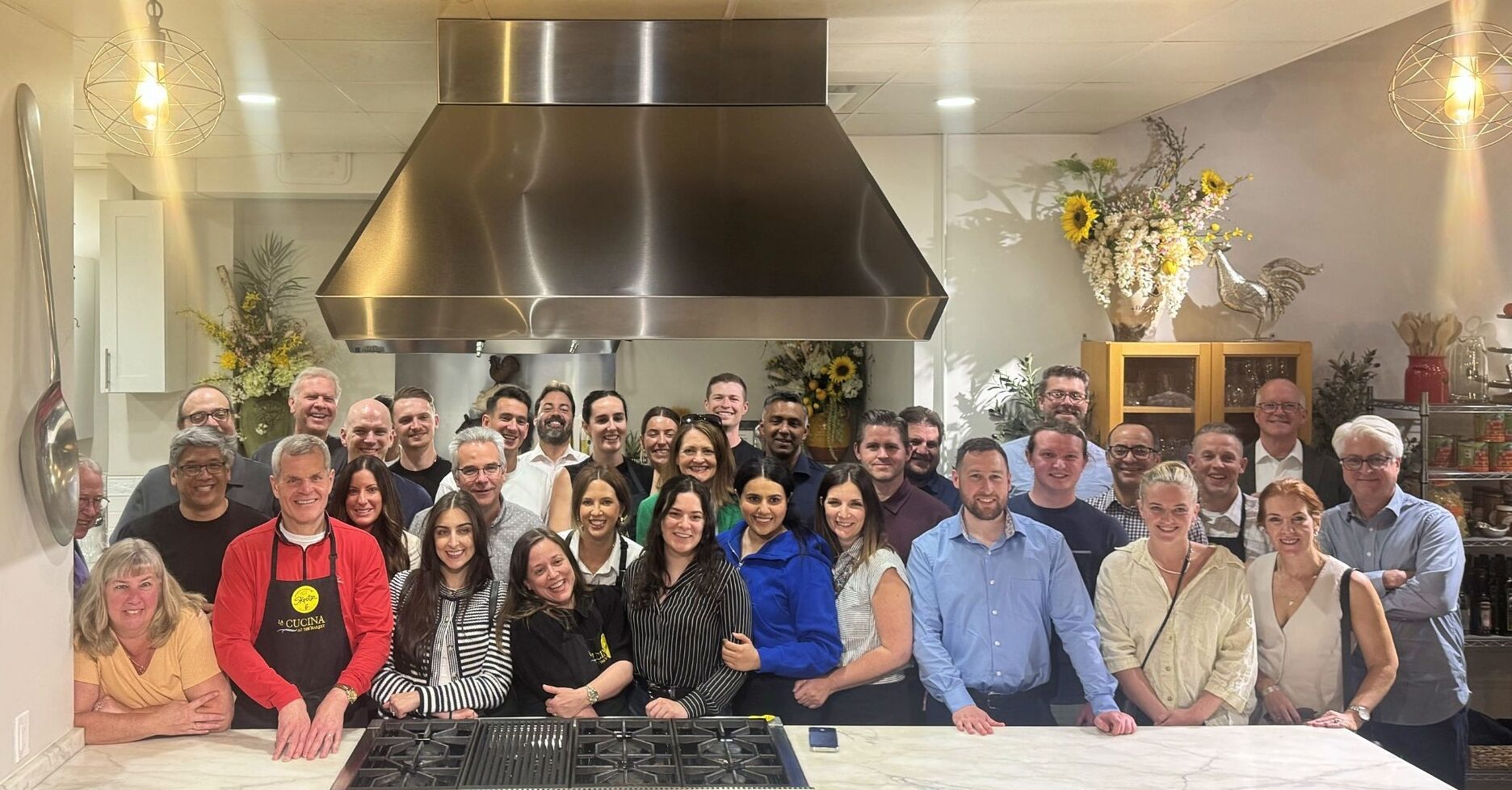How Law Firms Can Leverage Community, Culture, Compliance, and Technology for Success

Community, culture, compliance, and technology are four midsize law firm opportunities that surfaced during our first UK-hosted event, the Future of Mid-Market Law. This event brought together law firm professionals at the Ironmongers Hall in London to explore areas where midsize law firms can adapt and find new ways to thrive despite (and even fuelled by) the challenges of scaling your firm. During the event we had several speakers bring light to these opportunities including Dan Warburton, a law firm growth consultant, Chris Wilson from Myerson, Amy Bell from Teal Compliance, and Oliver Tromp from Actionstep. Read on to learn more about what each speaker covered.
Great culture, great profitability
In Dan Warburton’s “How Great Culture Can Lead to Great Profitability” presentation, attendees were equipped with the skills to make requests that create a great firm culture and move their team members into highly profitable action. For effective results, clarity is vital. Clear requests can help save your law firm staff time, and in turn focus on more profitable tasks. These requests should include a measurable result, a time frame, agreement, and no fluff! Warburton also covered how acknowledging is a high-level skill that creates deep loyalty and how accountability elevates firm culture. Effective acknowledgement includes telling someone exactly what they did well (even better when done in front of others), it’s given before corrective instruction, and is given regularly. Accountability ensures your team members succeed by holding them to account by agreement on who is accountable, tracking requests and promises, regular short meetings or calls for reporting, agreed and documented processes.
A notable mention from Warburton’s presentation is about profitable delegation. Profitable delegation is the skill that enables a law firm partner or owner to build a highly profitable firm and gain free time to focus on what matters to them, while also ensuring they build a great firm culture. But delegation only works when responsibility is transferred. So, it’s important to trust your team and their capabilities to own a task once the responsibility is transferred.
Secrets to grow and scale a mid-market law firm
Chris Wilson, Head of Business Development and Senior Associate Solicitor, at Myerson Solicitors took attendees on Myerson’s journey “From the High Street to the Top 200”. Their journey to success included formalising a business structure, leveraging marketing, business development, and the client journey, and prioritising people and culture. It’s no secret midsize law firms need to do more with less when competing with bigger law firms. A key step in this process is formalising a business structure that will be followed and improved as your firm scales. Law firms should consider profitable delegation (as mentioned earlier) and create positions for a CEO, COO, and Business Development department so managing partners can focus on fee earning, not running the business. Next, adopt the Entrepreneurial Operating System (EOS) by Gino Wickman and create business services (i.e. Roles in finance, marketing, business development, human resources, recruitment, operations, IT, and more), avoid individual billing targets, and increase reporting and statistics to see how your firm is performing.
A robust business structure isn’t good enough alone. You’ll need to focus on initiatives that attract new clients and look after your existing ones. This is where marketing and business development come in. Marketing drives demand for legal services to a wide audience, business development builds new relationships with a more personalised approach. A basic formula law firms can follow for creating these teams is to work toward a marketing team of six roles (digital marketing and offline marketing positions) and a business development team of three roles (client management, HR, and sales rep). As for the client journey, be clear with your client standards and intentions as well as follow up efforts like gathering client feedback and reviews for your business.
Lastly, Wilson touched on the importance of prioritising people and culture. This comes in the form of providing a vision for what your company culture’s ideal state (so that you’re hiring staff that add to these values, not necessarily match it identically), create policies in line with EOS (i.e. career guides and promotion transparency), training managers and supervisors, creating a people and culture team within HR, and providing a wealth of benefits like flexible hours, generous holidays, health contributions, maternity leave, and so on.
Compliance isn’t a burden
In the presentation “Is Compliance Scaring People Off?” hosted by Amy Bell, CEO and Founder of Teal Compliance, attendees got a clear overview on how to implement a compliance strategy that works, and people actually follow. A few of the main reasons law firms end up not following compliance include lack of reliable information, not enough time to manage the role, poor quality training and long, unclear policies, lack of commitment to compliance, lack of controls to check compliance, and other priorities override the compliance program. To ensure compliance, there are several things midsize law firms can do.
Step one is setting a groundwork for clarity. Understand your firm’s approach to risk, find out what you need to get done (or where gaps exist), prioritise quality training, get data to help you do the job, seek support from networks, regulators, or insurers, and find out how people feel about the process. Step two is designing capacity by determining costs associated with compliance and if these costs are effective. Step three is delivery of communication. What are your policies and procedures, and do they say what you want them to say? Ensure easy access to compliance information and have the right resources available like a key fact front sheet. In this step you’ll want to set up a recurring training that is engaging and relevant, educate leadership on compliance, and ensure it’s on everyone’s radar. Most importantly, be clear about what is expected of your whole company and make sure everyone agrees to the standards, details, and will be disciplined for non-compliance.
Moving on to step four, monitoring consistency ensures you have controls in place, everything is being carried out properly, you’re identifying the root cause for any issues, and this process repeats itself regularly. Step five looks at culture, which is one of the most important parts. Gone are the days of non-compliance excuses like “You can’t tackle that Partner, they’re the biggest biller” or “They’re just old fashioned”. These excuses that seem innocent can lead to big fines because your law firm wasn’t being compliant consistently. Ways to create a culture that respects and follows compliance procedures include looking at leadership and management, be clear on risk appetite, communicate, hold people accountable, deal with difficult conversations, incentivise compliance, have consequences for non-compliance, be transparent, encourage staff to call out non-compliance, and think carefully about impact before you do something.
Transforming your law firm with modern technology
To round off the event, Oliver Tromp, UK Regional Director of Actionstep, gave the presentation “Transforming Your Law Firm with Modern Technology” which delves into the steps needed to turn your law firm’s tech stack into a technology ecosystem that is modern, flexible, scalable, connected, and powerful. Firstly, a tech stack is simply all the platforms, tools, software, and hardware solutions your firm uses. It hasn’t been optimised for how your firm works and these tools have most likely not been connected. A tech ecosystem on the other hand is a curated set of tools that work together seamlessly to share data, automate tasks, and efficiently track and complete workflows, balancing automation with the right kind of human effort. Without a tech ecosystem, your firm can experience rising costs, inefficiency due to duplicate efforts and functionality, mistakes or data cracks, lack of visibility and complexity due to the high effort of managing so many tools.
To set up your firm’s ideal tech ecosystem you need to create a tech inventory of all the tools your firm uses and categorise the purpose of your tech stack and ecosystem, which should support growth management, work management, and business management. Next, identify pain points in your current tech stack and assess against tech ecosystem characteristics: flexible, streamlines, automates, adapts, and scales. Once you’ve identified any gaps, map out your ideal tech stack with must-haves, nice-to-haves, bottlenecks, redundancies, opportunities for automation and improved workflow, and exploring compatible integrations. The final step is to envision your highly functioning tech ecosystem and ensure adoption of this system within your firm.
We had such a wonderful time hosting this event, and meeting the amazing law firm professionals who attended our first UK-hosted event. We look forward to our next event, but in the meantime feel free to reach out and schedule a demo of Actionstep today.


